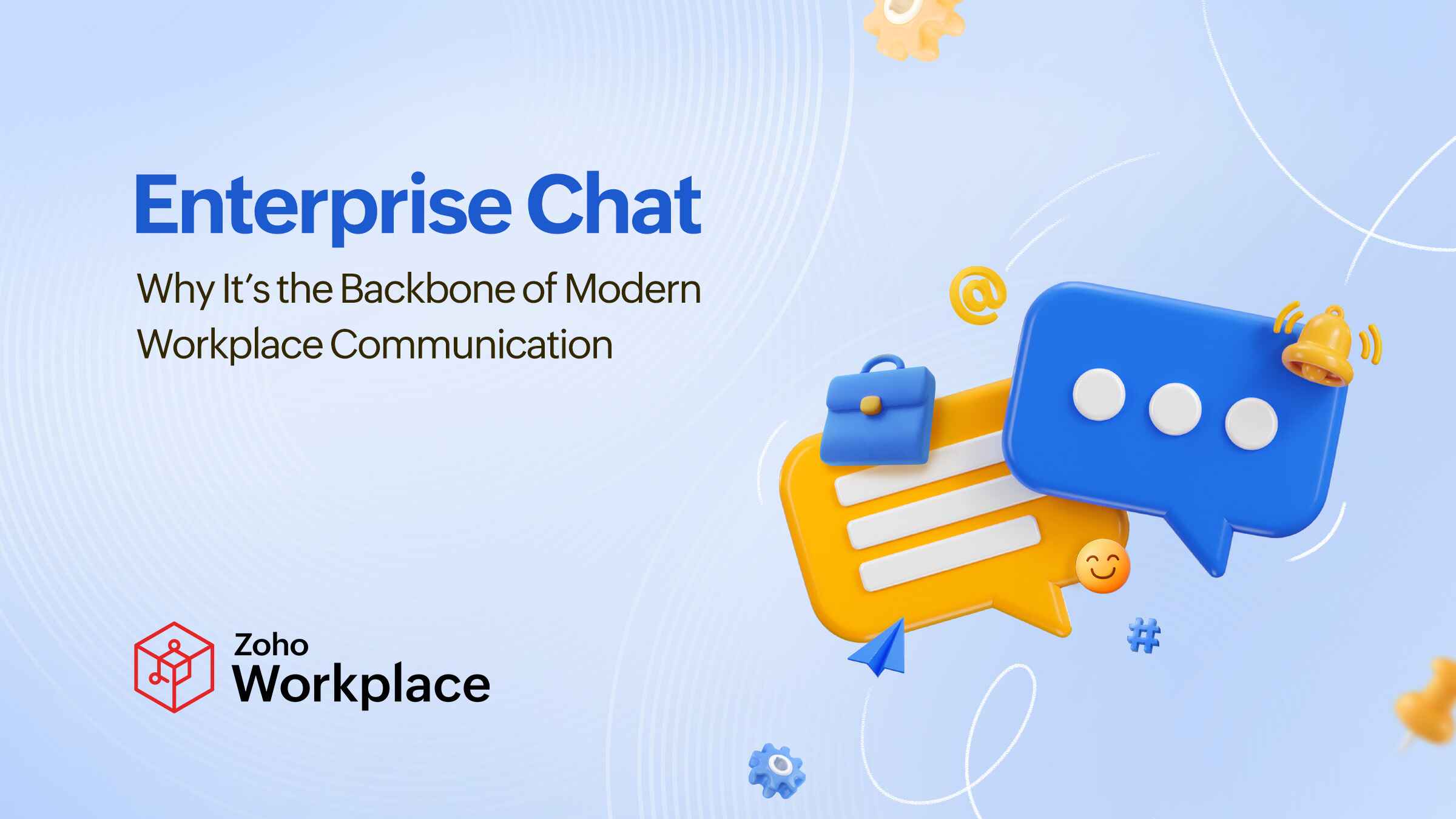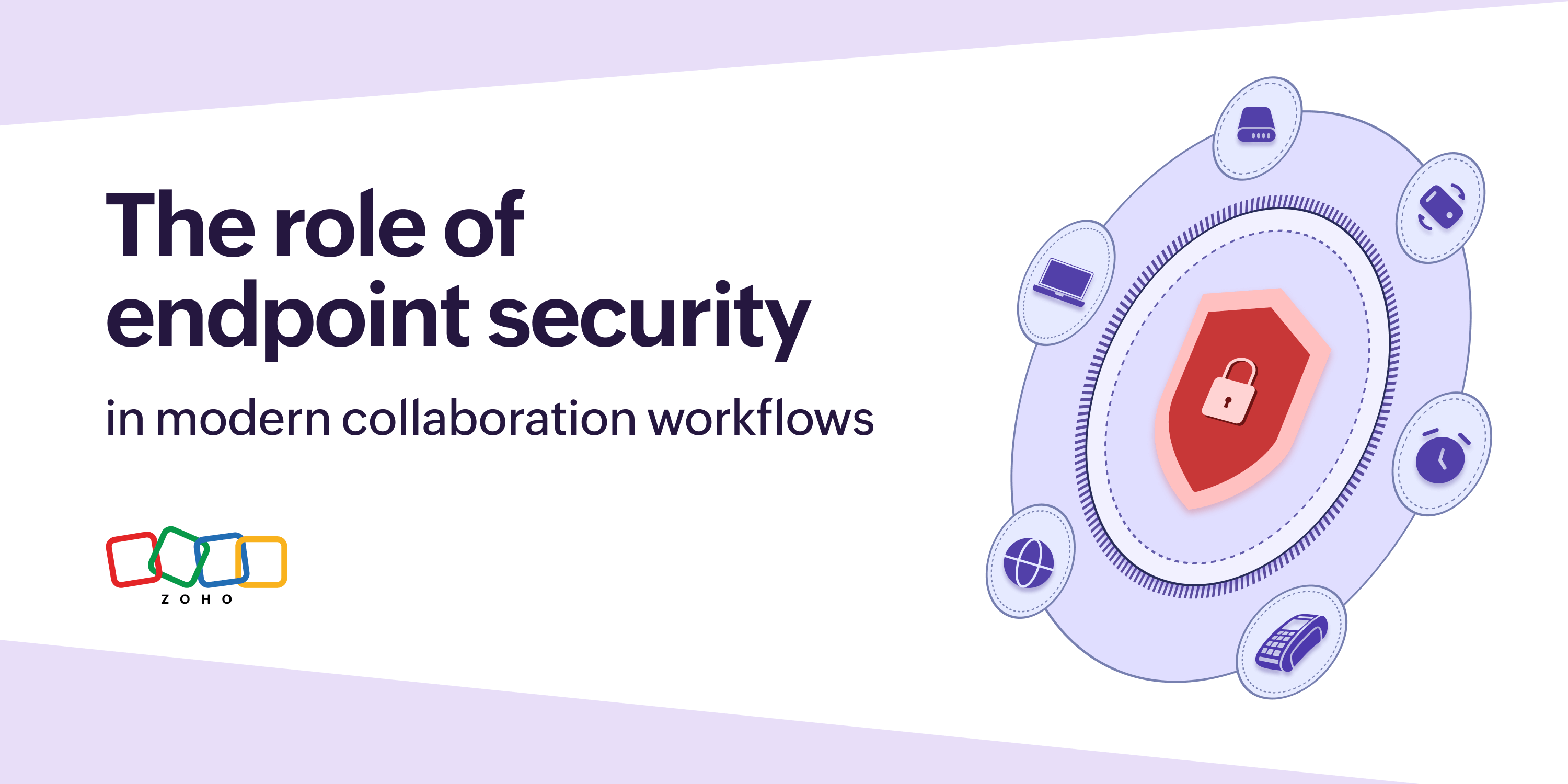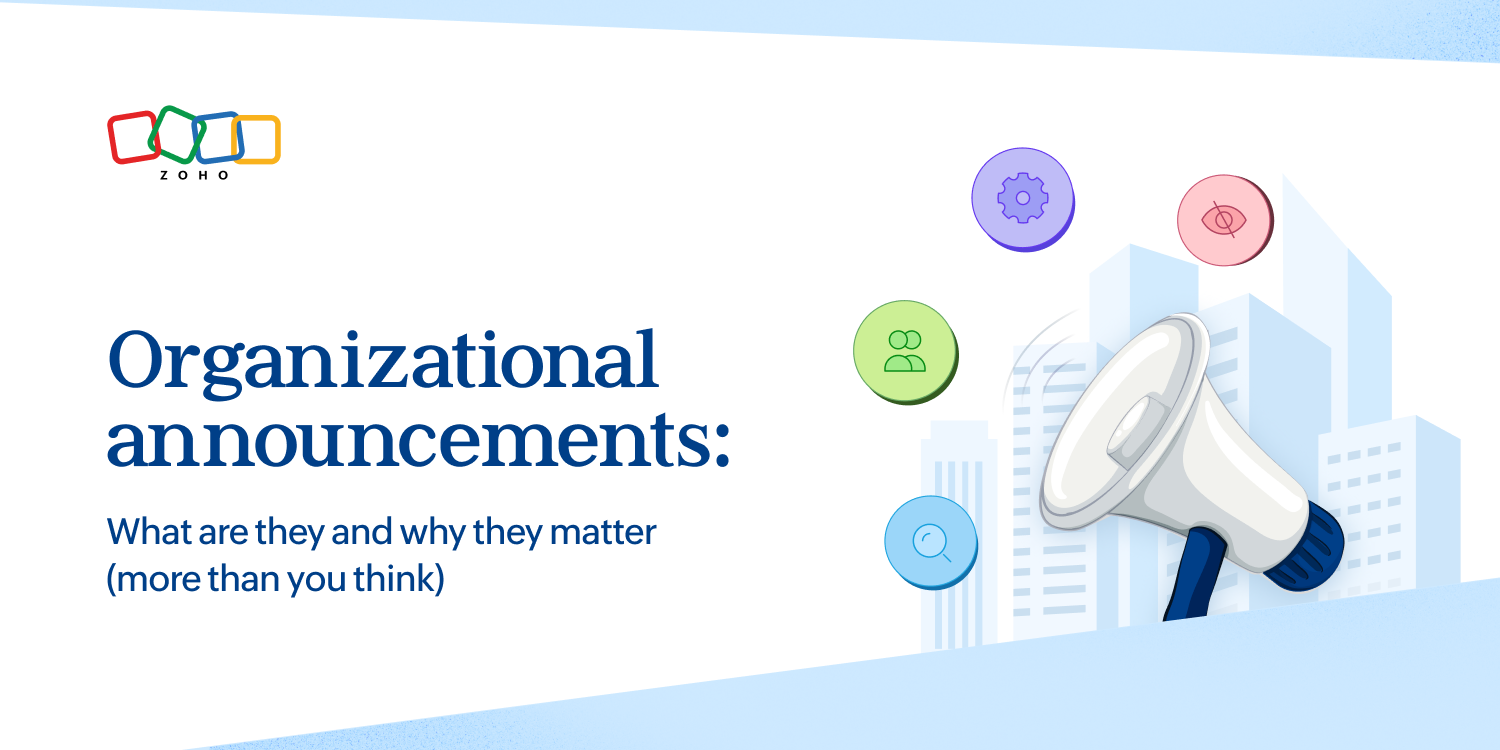- HOME
- All Products
- Collaboration
- Enterprise chat: Why it’s the backbone of modern workplace communication
Enterprise chat: Why it’s the backbone of modern workplace communication
- Published : October 30, 2025
- Last Updated : October 31, 2025
- 199 Views
- 6 Min Read
Behind every successful organization is successful communication. But with today’s distributed teams and fast-moving work, email can’t always keep up.
That’s where enterprise chat comes in. Designed to facilitate speedy, seamless, and secure communication, chat makes it easier for employees to connect and collaborate in real time—regardless of where they’re working.

What is enterprise chat?
The term enterprise chat refers to secure, organization-wide messaging platforms that allow employees to communicate, collaborate, and share information in real time. Common examples include Zoho Cliq, Slack, and Microsoft Teams.
Unlike consumer chat apps (like Facebook Messenger or WhatsApp), enterprise chat tools are designed specifically for business use—meaning they integrate with other workplace tools and applications, support team channels or group chats, and include more advanced features like file sharing, task management, and admin controls.
While email remains the most widely used communication tool overall, chat platforms are increasingly popular—especially among younger generations. It’s estimated that an impressive 80% to 90% of employees have adopted chat as one of their main workplace communication platforms.
3 key benefits of enterprise chat
Why has enterprise chat seen such widespread and rapid adoption? When it’s implemented and used thoughtfully, it offers many compelling benefits for organizations and workers, including:
Faster communication: Many companies default to chat solutions for real-time conversations or questions and issues that need quick answers. Think of it like the digital equivalent of popping by someone’s desk. For that reason, enterprise chat typically facilitates much speedier communication than emails.
Smoother collaboration: People can use chat in real time, making it far more interactive than emails. It’s a low-pressure outlet for friendly, water cooler chatter that would otherwise happen in the office. That can help strengthen bonds and trust between team members. Gallup found that 45% of workers say digital communication makes them feel more connected to their team, a feeling that’s particularly strong among remote and hybrid workers.
Improved productivity: When people have an easier time getting the information they need and can work together seamlessly, it makes sense that their productivity increases. They’re able to make progress on their work—without waiting hours for a response to an email.
Enterprise chat helps teams stay connected, move faster, and get more done. It does more than replace or supplement email, it offers a more dynamic and collaborative way to work.
The potential downsides of enterprise chat
While enterprise chat has plenty of advantages, it's not without its drawbacks. Most of the risks of chat platforms revolve around overwhelm and overload.
Because chat is so convenient and easy, it doesn’t take long for it to become one of the dominant communication channels at work. In one study, email communication decreased by as much as 50% due to instant messaging.
So, workers use chat a lot—and that means a lot of messages. Those constant pings can be disruptive and tear their attention away from their work. When it takes anywhere from eight to 25 minutes to refocus after an interruption, instant messages have the potential to hinder (rather than help) worker productivity.
A constant stream of messages isn’t just distracting—it’s daunting. It’s normal for workers to struggle with information overload due to the seemingly relentless nature of chat.
Because many employees view chat as a real-time communication tool, there’s increased pressure to be “always on.” Forbes found that 58% of workers reported that digital communication makes them feel like they need to be available more often.
All of this means that enterprise chat can be a strain on workers’ focus, productivity, and performance. But the good news is these risks aren’t insurmountable. Rather, they illustrate the importance of being thoughtful and intentional about how you introduce and manage an enterprise chat solution with your team.
5 best practices for rolling out enterprise chat at your organization
Understandably, you want to reap the rewards of enterprise chat while avoiding (or at least minimizing) the downsides. Here are five strategies to help you ensure that enterprise chat is a supportive tool—rather than a steady interruption—for your team.
1. Find the right solution
Chat should simplify and streamline your team’s work, not add more complexity or yet another tool they need to keep track of. That becomes a lot easier when you find the right chat solution. Look for a platform that:
- Centralizes communication and collaboration in one place.
- Integrates with the other tools and applications you already use.
- Is intuitive to use, even for your less tech-savvy team members.
- Offers scheduled messages and auto-replies to support a healthy work-life balance.
Of course, you’ll also need to make sure that your chosen solution meets your security and compliance needs and offers any other communication features—like video calling, for example—you’re looking for.
2. Establish some ground rules
Even when you find the perfect platform, introducing it with a quick, “Here’s a new spot where you can trade messages!” announcement will set everybody up for failure. Instead, take the time to lay out some expectations, such as:
- Which type of messages should chat be used for? Quick questions? Friendly chatter?
- What is considered a reasonable response time on your team?
- When should people tag someone directly or use the @here/@all notifications?
- How will you use threads? When should people reply in a thread versus starting a new one?
It’s also helpful to establish some systems or norms to help people communicate with each other—without needing to say things explicitly. For example, setting a certain status or using a specific emoji next to their name could indicate that they’re in “deep work” mode and shouldn’t be interrupted unless it’s truly an emergency.
Finally, remind people to keep things professional. Even though chat feels informal, tone still matters. Encourage kindness, clarity, and professionalism in all messages.
3. Lead by example
Much like everything else in your organization, your leaders and managers set the tone. When they model good chat habits—like using threads appropriately, respecting “do not disturb” hours, or keeping messages clear and concise—it signals to the team that those expectations apply to everyone.
If and when you see a manager violating any chat expectations, kindly bring it to their attention so they can correct the behavior quickly.
Encouraging them to take ownership of their misstep publicly (it can be something as simple as posting, “Oops, I’m moving this message into the designated thread where it belongs!”) is a great way to demonstrate accountability while simultaneously reinforcing your chat norms.
4. Offer recurring training
It’s tempting to roll out your chat platform with a single introduction or training session and then assume people will use it effectively for the foreseeable future.
But those early trainings don’t always stick. When chat is sure to become such a staple of your workplace communication, it’s worth the ongoing effort to ensure people are making the most of it.
Continuously providing short walkthroughs, regular FAQs, or even quick tip sessions can remind people (and teach new employees) about chat features and etiquette expectations.
Some of this training can also focus on helping people be more mindful about their messages so that chat makes communication easier, not noisier. Can this message wait? Could it be added to a shared doc or project board instead? Encouraging employees to be more intentional reduces unnecessary pings and keeps chat conversations purposeful.
5. Check in regularly
How your team uses chat will evolve, so don’t assume that what’s working well now will work the same in a few months. Check in frequently on things like:
- Are people using chat for its intended purpose?
- Are channels clearly named and organized?
- Are channels getting cluttered?
- Can any channels be archived?
- Are notifications too frequent?
- Are focus hours being respected?
- What features or integrations could make the experience better?
Use the insights you gather to make adjustments and keep your chat solution as efficient and user-friendly as possible—both today and as you move forward.
Enterprise chat has entered the chat
While email isn’t going anywhere anytime soon, enterprise chat has secured its position as an essential tool for team communication, collaboration, and connection.
Like any tool, enterprise chat is what you make of it. When it’s used intentionally, it’s less about endless pings and high pressure, and more about purposeful conversations that move work forward.
 Kat Boogaard
Kat BoogaardKat is a freelance writer focused on the world of work. She writes for both employers and employees, and mainly covers topics related to the workplace such as productivity, entrepreneurship, and business success. Her byline has appeared in The New York Times, Fast Company, Business Insider, Forbes, and more.


